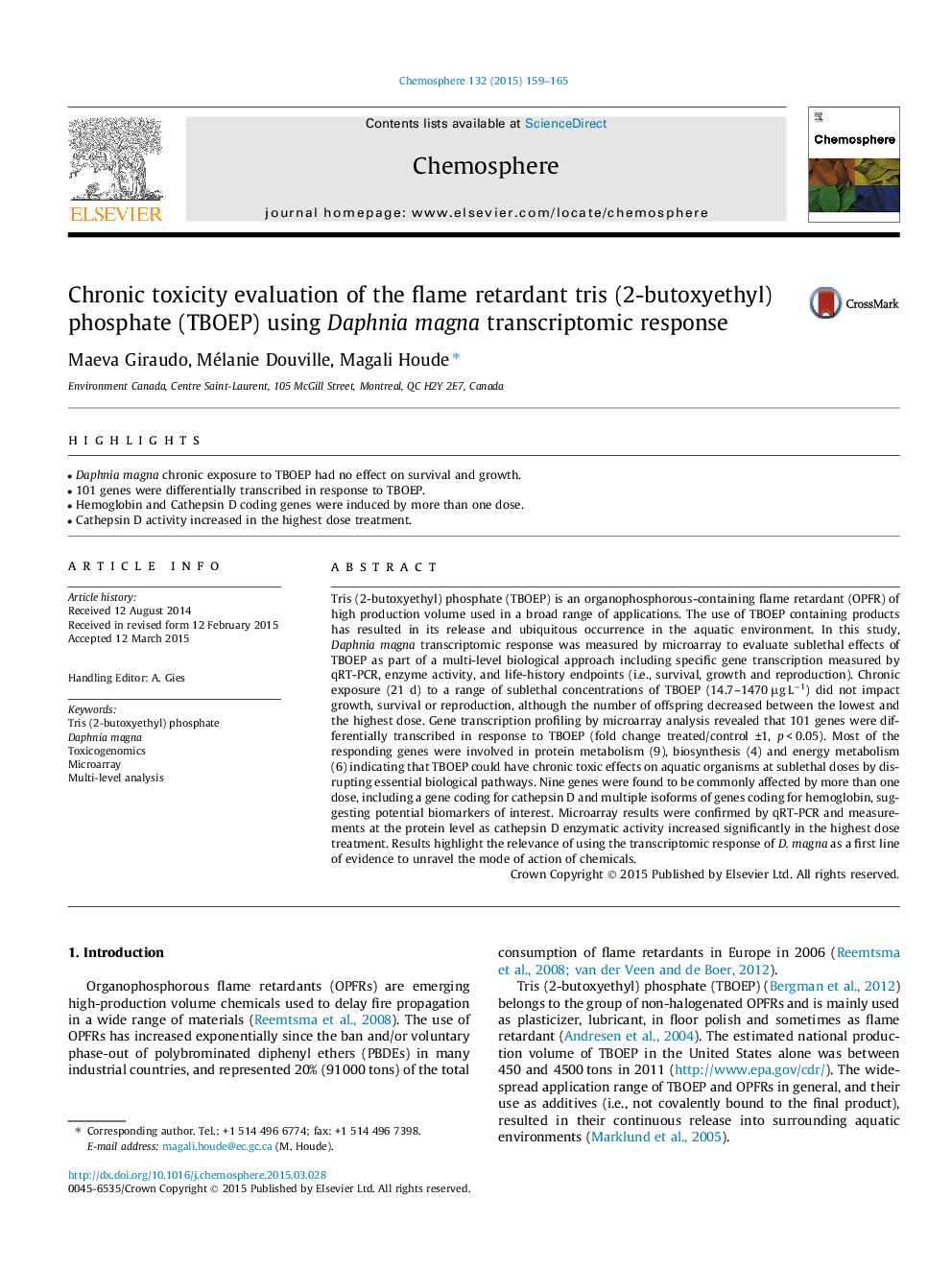| کد مقاله | کد نشریه | سال انتشار | مقاله انگلیسی | نسخه تمام متن |
|---|---|---|---|---|
| 6307959 | 1618839 | 2015 | 7 صفحه PDF | دانلود رایگان |
عنوان انگلیسی مقاله ISI
Chronic toxicity evaluation of the flame retardant tris (2-butoxyethyl) phosphate (TBOEP) using Daphnia magna transcriptomic response
دانلود مقاله + سفارش ترجمه
دانلود مقاله ISI انگلیسی
رایگان برای ایرانیان
کلمات کلیدی
موضوعات مرتبط
علوم زیستی و بیوفناوری
علوم محیط زیست
شیمی زیست محیطی
پیش نمایش صفحه اول مقاله

چکیده انگلیسی
Tris (2-butoxyethyl) phosphate (TBOEP) is an organophosphorous-containing flame retardant (OPFR) of high production volume used in a broad range of applications. The use of TBOEP containing products has resulted in its release and ubiquitous occurrence in the aquatic environment. In this study, Daphnia magna transcriptomic response was measured by microarray to evaluate sublethal effects of TBOEP as part of a multi-level biological approach including specific gene transcription measured by qRT-PCR, enzyme activity, and life-history endpoints (i.e., survival, growth and reproduction). Chronic exposure (21 d) to a range of sublethal concentrations of TBOEP (14.7-1470 μg Lâ1) did not impact growth, survival or reproduction, although the number of offspring decreased between the lowest and the highest dose. Gene transcription profiling by microarray analysis revealed that 101 genes were differentially transcribed in response to TBOEP (fold change treated/control ±1, p < 0.05). Most of the responding genes were involved in protein metabolism (9), biosynthesis (4) and energy metabolism (6) indicating that TBOEP could have chronic toxic effects on aquatic organisms at sublethal doses by disrupting essential biological pathways. Nine genes were found to be commonly affected by more than one dose, including a gene coding for cathepsin D and multiple isoforms of genes coding for hemoglobin, suggesting potential biomarkers of interest. Microarray results were confirmed by qRT-PCR and measurements at the protein level as cathepsin D enzymatic activity increased significantly in the highest dose treatment. Results highlight the relevance of using the transcriptomic response of D. magna as a first line of evidence to unravel the mode of action of chemicals.
ناشر
Database: Elsevier - ScienceDirect (ساینس دایرکت)
Journal: Chemosphere - Volume 132, August 2015, Pages 159-165
Journal: Chemosphere - Volume 132, August 2015, Pages 159-165
نویسندگان
Maeva Giraudo, Mélanie Douville, Magali Houde,